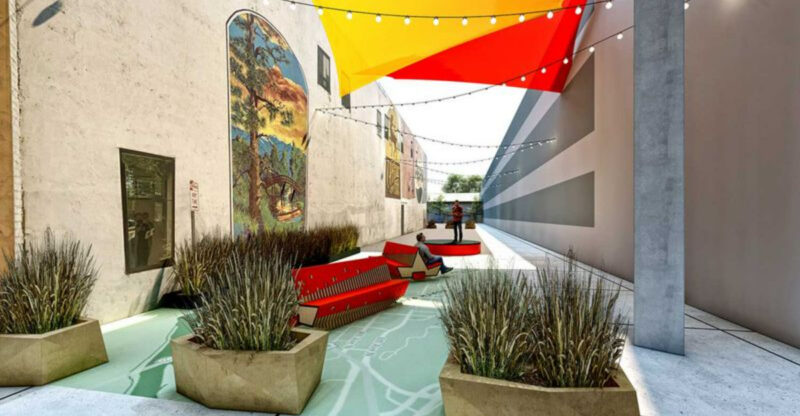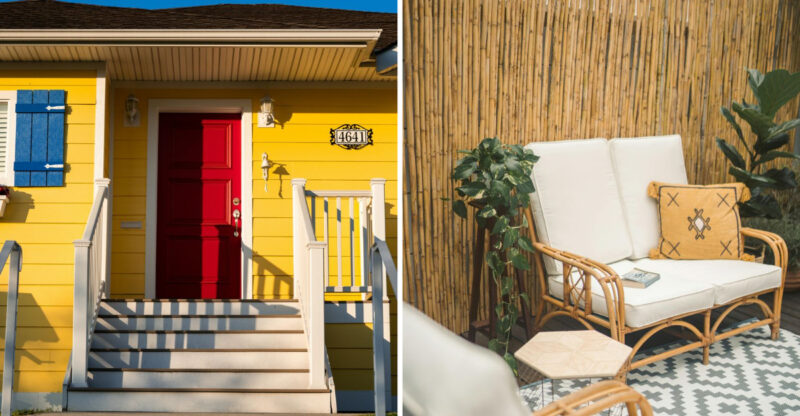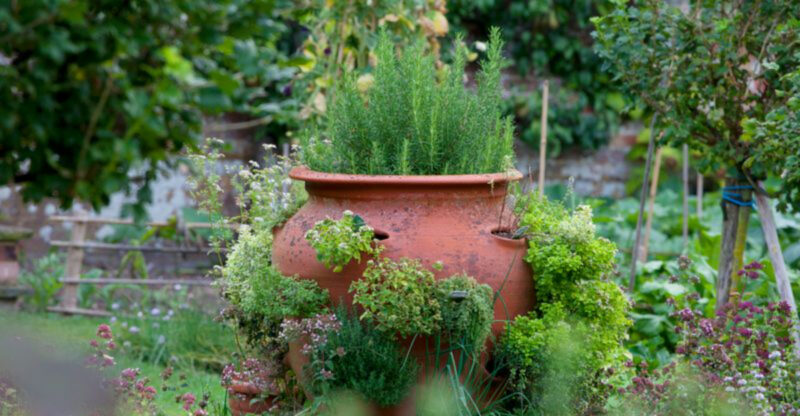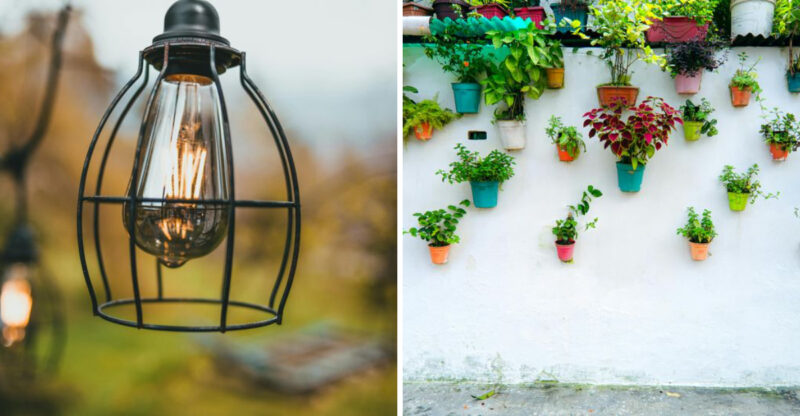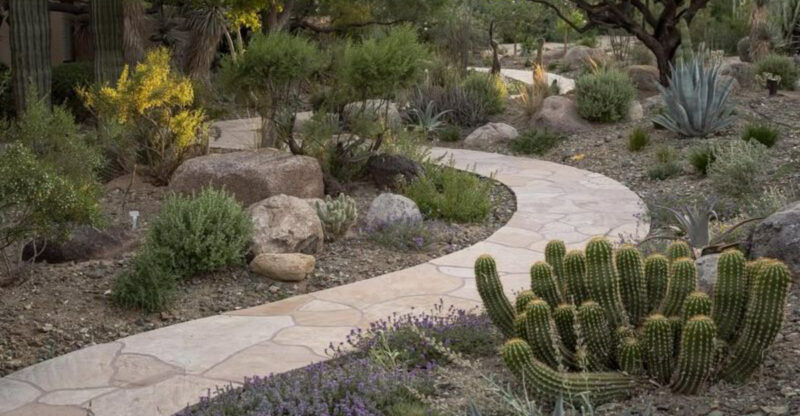10 Desert-Friendly Exterior Design Ideas From Arizona Homes
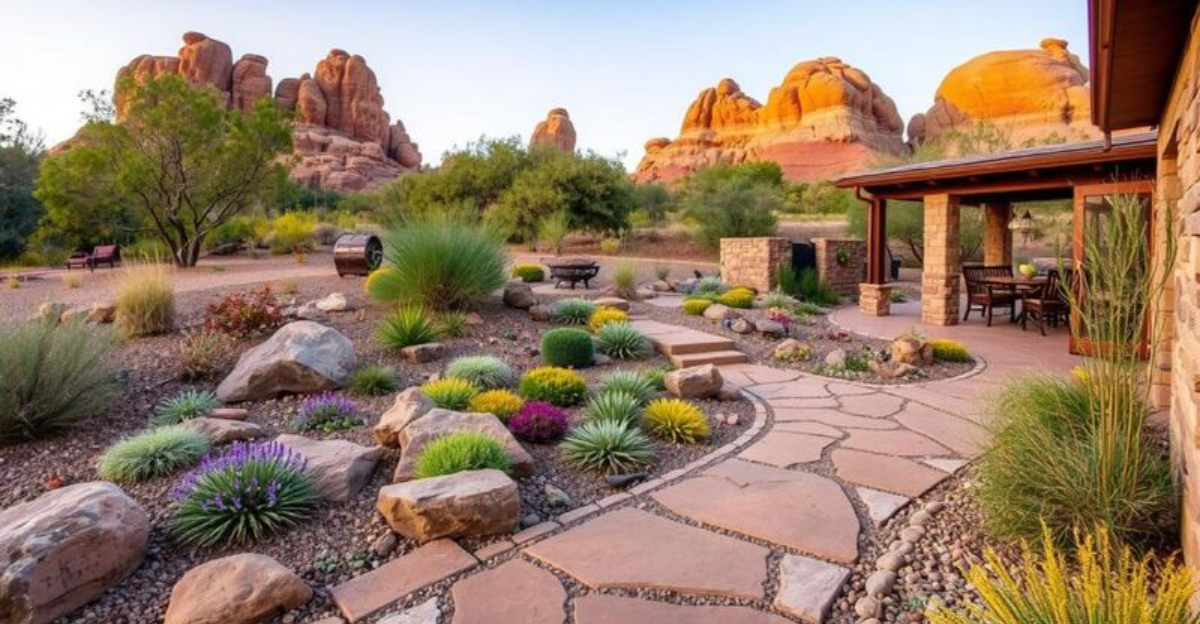
Designing outdoor spaces in Arizona means working with the elements, not against them. The intense sun, dry climate, and limited water might sound like obstacles – but for savvy homeowners, they’re opportunities.
Across the state, patios, courtyards, and gardens are being reimagined with desert-smart solutions that are as functional as they are beautiful. With the right mix of materials, plants, and shade, Arizona outdoor living becomes an art form rooted in resilience and style.
1. Xeriscaping With Native Plants
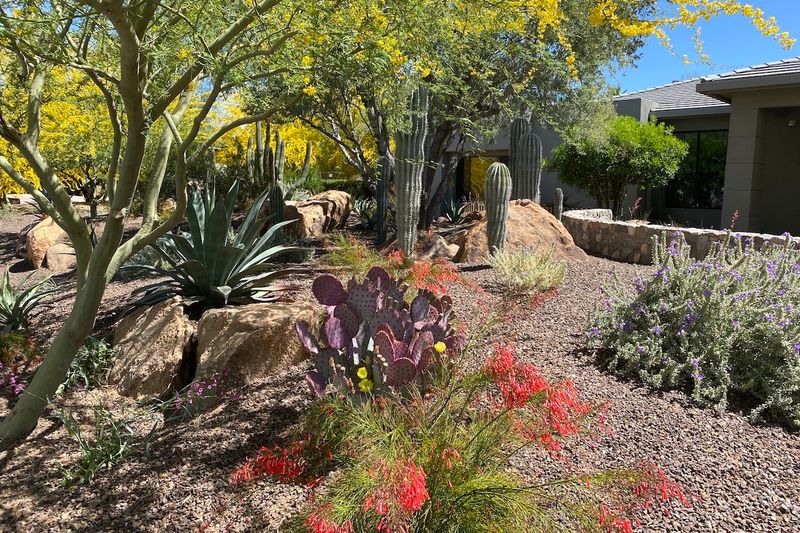
Gone are the days of thirsty lawns dominating front yards! Native plants like prickly pear, ocotillo, and desert marigold thrive with minimal water while providing gorgeous texture and color.
Xeriscaping with desert flora creates a landscape that naturally belongs in Arizona’s ecosystem. Plus, you’ll attract local wildlife like hummingbirds and butterflies, adding life to your outdoor sanctuary.
2. Stylish Shade Structures
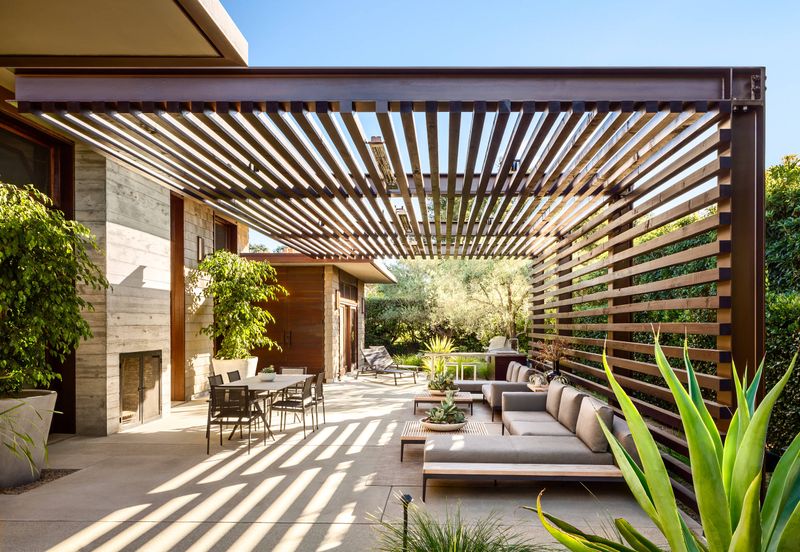
Beating the heat becomes an art form with strategically placed ramadas, pergolas, and sail shades. These architectural elements create cool outdoor living spaces while adding distinctive Southwestern character.
Stylish shade structures extend your usable outdoor time significantly. Many Arizona homeowners incorporate climbing vines like bougainvillea or trumpet vine to add color and enhance cooling effects.
3. Rainwater Harvesting Systems
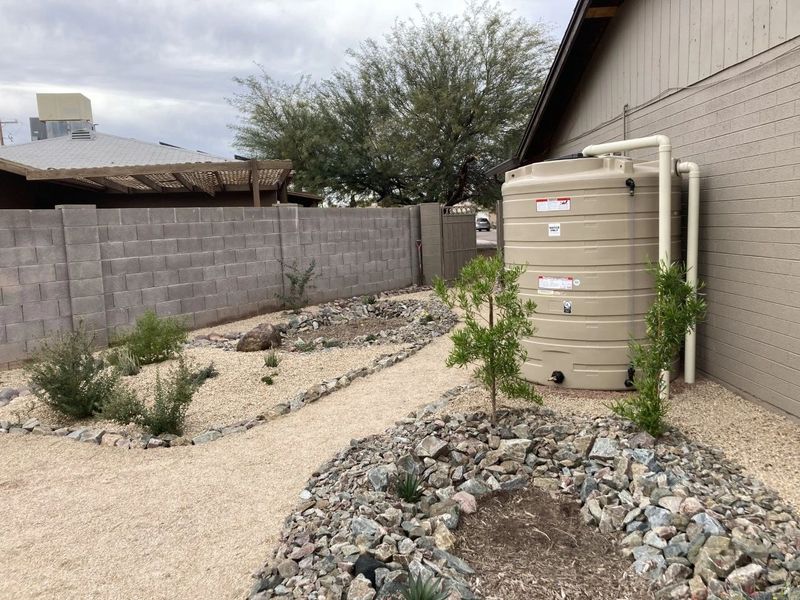
Capturing precious rainfall becomes a game-changer in parched regions. Simple rain barrels or sophisticated cistern systems collect roof runoff for landscape irrigation during dry spells.
Rainwater harvesting connects directly to desert-friendly gardens through drip irrigation. Arizona homeowners often incorporate decorative dry creek beds that double as functional drainage channels during heavy monsoon downpours.
4. Outdoor Living Rooms
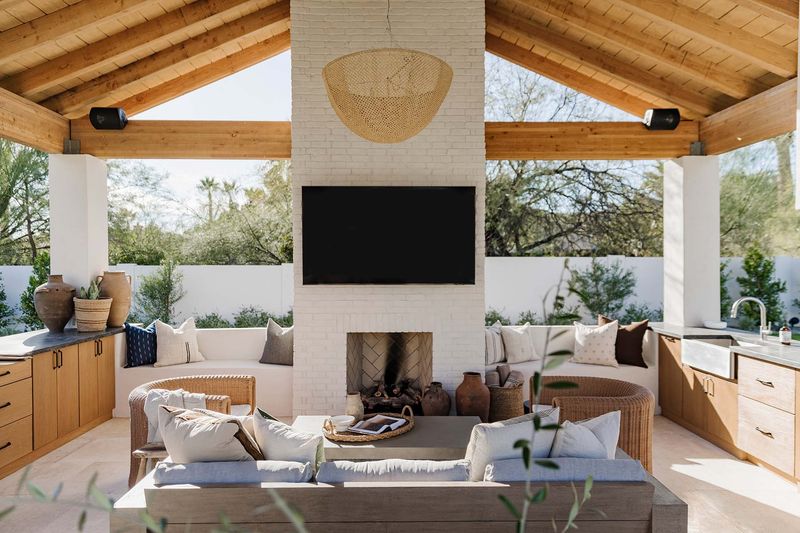
Blurring the line between indoors and out creates magical spaces for desert living. Fire pits extend evening enjoyment while outdoor kitchens make the most of Arizona’s abundant sunshine.
Outdoor living areas in Arizona homes often feature weather-resistant furniture and fabrics. The best designs incorporate existing desert views as natural artwork, framing mountain vistas or saguaro silhouettes.
5. Cooling Water Features
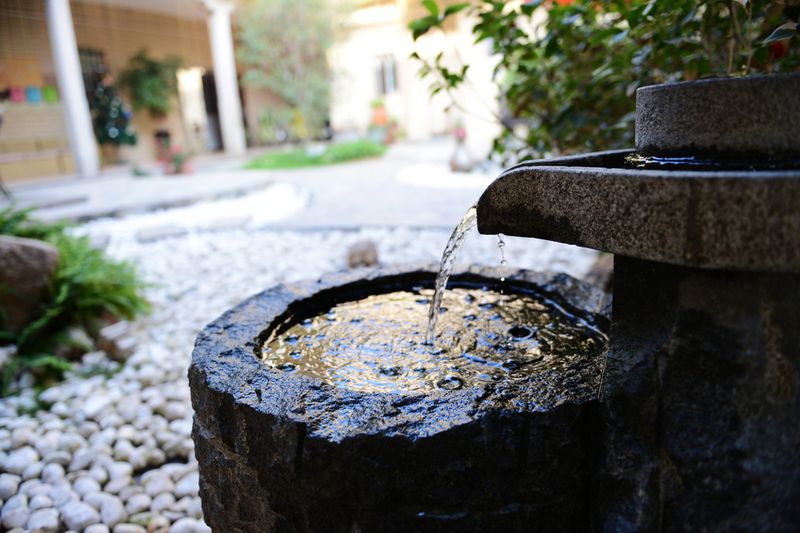
Small-scale fountains and water walls provide evaporative cooling without excessive water use. The gentle sound of trickling water creates a psychological cooling effect even on the hottest days.
Cooling water features in desert homes are typically recirculating to minimize waste. Many Arizona designers incorporate desert-appropriate plants around water elements to create mini-oasis spots that attract birds and provide refreshing focal points.
6. Desert-Smart Hardscaping
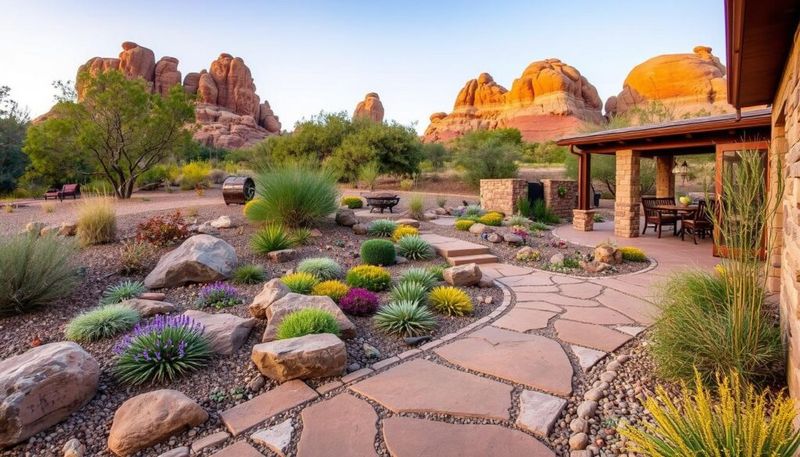
Flagstone patios, gravel pathways, and decorative rock gardens form the backbone of water-wise landscapes. Smart hardscaping choices direct rainwater to plants and prevent erosion during monsoon season.
Desert-appropriate materials like sandstone and decomposed granite complement the natural environment. When designed thoughtfully, these elements create visual interest through texture and color variations without requiring a drop of irrigation.
7. Courtyard Entryways
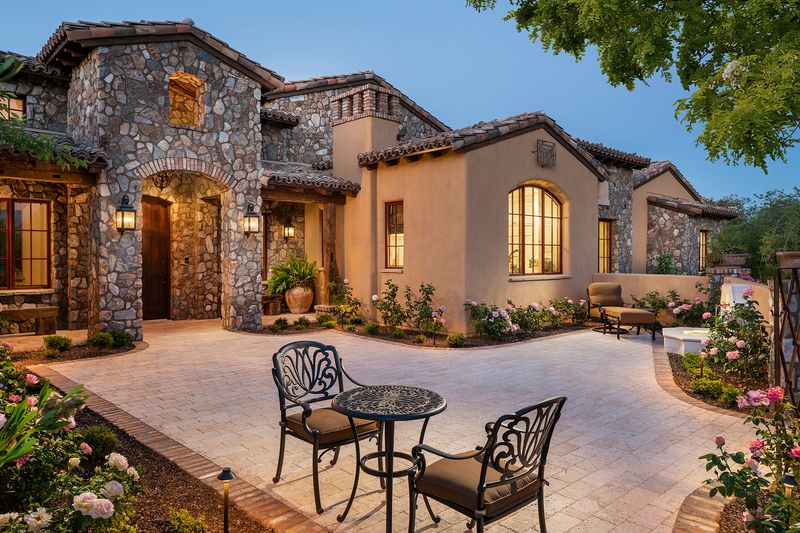
First impressions flourish behind courtyard walls that create microclimate havens. Protected from harsh winds and afternoon sun, these entryways allow for more delicate plantings that might struggle elsewhere.
Courtyard designs often incorporate traditional elements like decorative gates and tile accents. Many Arizona homes feature these semi-private transitional spaces as a buffer between the harsh desert and interior comfort.
8. Solar-Powered Landscape Lighting

Magical evenings emerge when strategic lighting highlights architectural features and desert plants. Solar fixtures harness abundant Arizona sunshine during the day to create dramatic nighttime effects without increasing energy bills.
Solar-powered options eliminate the need for complex wiring in rocky terrain. Many Arizona homeowners use lighting to showcase specimen cacti, creating stunning silhouettes against home walls or highlighting unique desert garden focal points.
9. Cool-Toned Building Materials
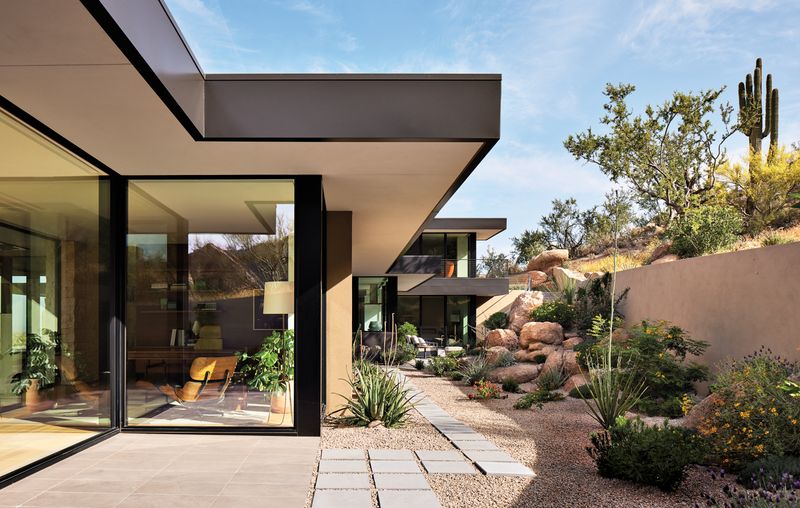
Reflective roofing and light-colored pavers significantly reduce heat absorption. Smart material choices can lower surrounding temperatures by up to 10 degrees compared to conventional options.
Cool-toned materials like limestone and light stucco naturally complement desert aesthetics. Many Arizona architects incorporate these elements alongside strategically placed windows and overhangs to maximize shade during summer while allowing warming winter sun.
10. Cactus Gardens As Living Sculptures

Architectural plants create living art installations requiring virtually no maintenance. Columnar cacti, agaves, and yuccas provide dramatic vertical elements that contrast beautifully with the horizontal desert landscape.
Cactus gardens showcase the incredible diversity of desert flora. Arizona designers often group specimens with complementary forms and growth habits, spacing them to allow for mature size while creating immediate visual impact with carefully placed boulders and decorative gravel.

